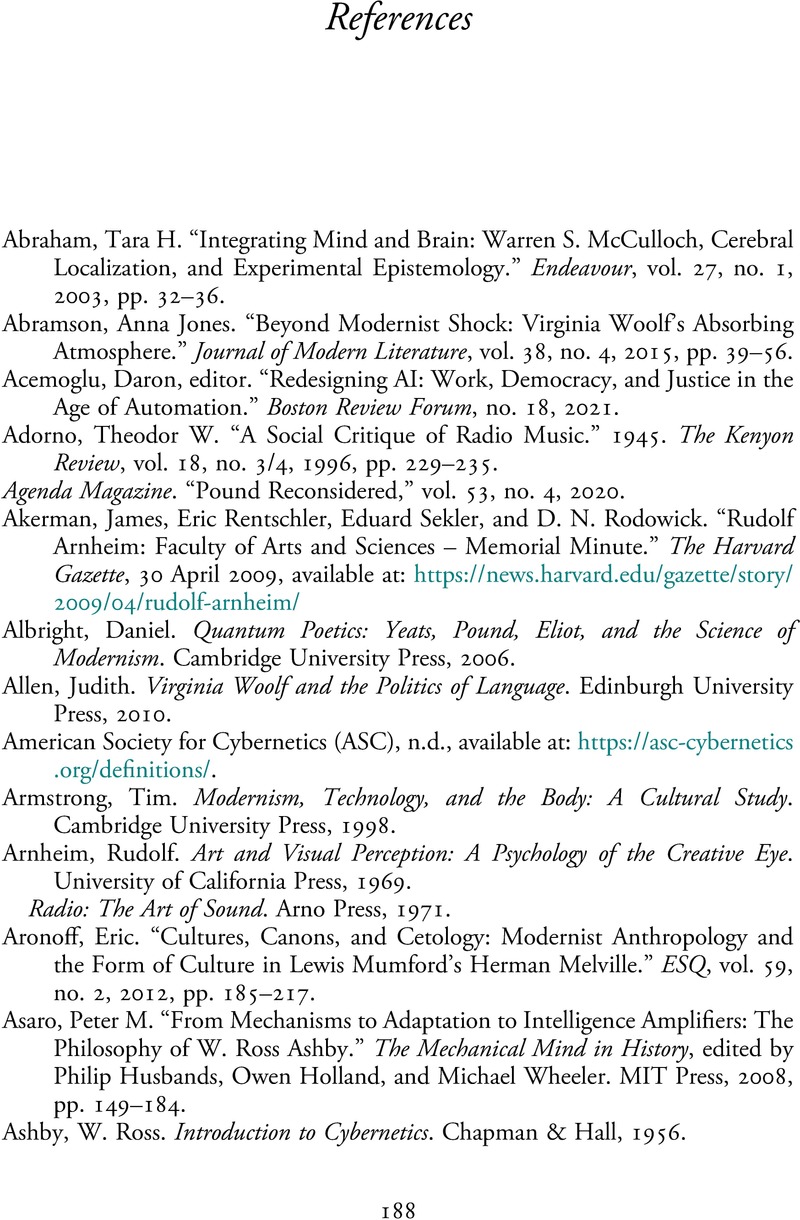Book contents
- Cybernetic Aesthetics
- Cybernetic Aesthetics
- Copyright page
- Dedication
- Contents
- Acknowledgments
- Introduction
- Chapter 1 Feedback Loops and Learning from the Past
- Chapter 2 The Cybernetic Information Dialectic
- Chapter 3 Black Box Subjectivity
- Chapter 4 Cultural Composition, Insistent Spirals, and Definition by Contrast
- Coda
- Notes
- References
- Index
- References
References
Published online by Cambridge University Press: 10 October 2023
- Cybernetic Aesthetics
- Cybernetic Aesthetics
- Copyright page
- Dedication
- Contents
- Acknowledgments
- Introduction
- Chapter 1 Feedback Loops and Learning from the Past
- Chapter 2 The Cybernetic Information Dialectic
- Chapter 3 Black Box Subjectivity
- Chapter 4 Cultural Composition, Insistent Spirals, and Definition by Contrast
- Coda
- Notes
- References
- Index
- References
Summary

Information
- Type
- Chapter
- Information
- Cybernetic AestheticsModernist Networks of Information and Data, pp. 188 - 205Publisher: Cambridge University PressPrint publication year: 2023
